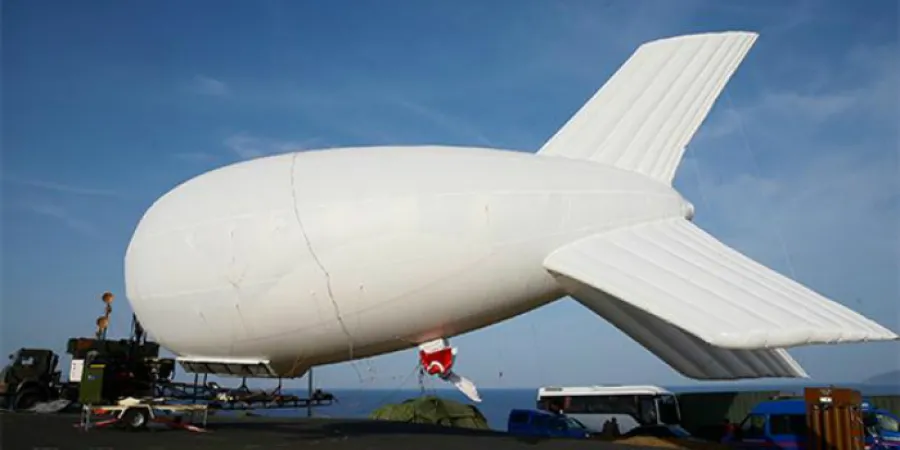Turkey to Install New Air Defense Systems on Syria Border
The Elbeyli border crossing in southeast Turkey’s will be protected by counter-mortar radar systems, artillery systems, and aerostat surveillance systems. A five-meter-high wall will bolster Turkey's border security as well
Dan Arkin
| 06/02/2017
According to reports by the Hurriyet Daily News, Turkey is set to install new air defense systems at the Elbeyli border crossing in Turkey’s southeastern province of Kilis, as rocket attacks originating from ISIS-held regions across the border in Syria have taken the lives of 21 civilians in the province this year.
Developed by Aselsan, the country’s leading defense manufacturer, the counter-mortar “Serhat” radar system and self-propelled “Korkut” air defense gun system were recently installed at the Öncüpınar border crossing in Kilis, as part of plans by the Turkish Armed Forces (TSK) to upgrade border security.
Korkut, which has a rate of fire of 1100 rounds per minute, is expected to destroy rockets some four kilometers before they hit the ground, in cases where they are unnoticed by drones.
Moreover, two batteries of Aselsan’s High-Mobility Artillery Rocket System (HIMARS) will also be brought to Kilis alongside armed drones.
Meanwhile, efforts to seal off a 70-kilometer strip of Turkey’s border that stretches from just east of the Turkish town of Kilis to Karkamış were nearing an end, while a physical security system will soon be installed. According to reports, the wall’s construction continues in the southeastern provinces of Kilis, Gaziantep, Hatay, Şanlıurfa and Mardin.
The structure, 70 percent of which is now complete, will be five meters high – including four meters of concrete and a meter of razor wire.
The border will be monitored 24/7 with unmanned bubbled surveillance systems dubbed “mini-zeppelins,” also developed by Aselsan.
The surveillance system enables immobile facilities such as small units and posts to monitor local security and gives early warnings. With two different models, the surveillance system can convey images over a 360-degree area in real-time to the control station, with day and night cameras. The system will also be able to withstand light weapon fire and high winds.
The water drop model of the camera, which is 16 meters in length and has a capacity of 180 cubic meters, can climb to an altitude of 1,000 meters. The spherical model of the camera, with a capacity of 35 cubic meters, can climb to 500 meters.
The Turkish army has already begun to test the water drop model at border posts. Currently under development, the system has already carried out a total of 400 hours of duty, particularly across the border.
The Elbeyli border crossing in southeast Turkey’s will be protected by counter-mortar radar systems, artillery systems, and aerostat surveillance systems. A five-meter-high wall will bolster Turkey's border security as well
According to reports by the Hurriyet Daily News, Turkey is set to install new air defense systems at the Elbeyli border crossing in Turkey’s southeastern province of Kilis, as rocket attacks originating from ISIS-held regions across the border in Syria have taken the lives of 21 civilians in the province this year.
Developed by Aselsan, the country’s leading defense manufacturer, the counter-mortar “Serhat” radar system and self-propelled “Korkut” air defense gun system were recently installed at the Öncüpınar border crossing in Kilis, as part of plans by the Turkish Armed Forces (TSK) to upgrade border security.
Korkut, which has a rate of fire of 1100 rounds per minute, is expected to destroy rockets some four kilometers before they hit the ground, in cases where they are unnoticed by drones.
Moreover, two batteries of Aselsan’s High-Mobility Artillery Rocket System (HIMARS) will also be brought to Kilis alongside armed drones.
Meanwhile, efforts to seal off a 70-kilometer strip of Turkey’s border that stretches from just east of the Turkish town of Kilis to Karkamış were nearing an end, while a physical security system will soon be installed. According to reports, the wall’s construction continues in the southeastern provinces of Kilis, Gaziantep, Hatay, Şanlıurfa and Mardin.
The structure, 70 percent of which is now complete, will be five meters high – including four meters of concrete and a meter of razor wire.
The border will be monitored 24/7 with unmanned bubbled surveillance systems dubbed “mini-zeppelins,” also developed by Aselsan.
The surveillance system enables immobile facilities such as small units and posts to monitor local security and gives early warnings. With two different models, the surveillance system can convey images over a 360-degree area in real-time to the control station, with day and night cameras. The system will also be able to withstand light weapon fire and high winds.
The water drop model of the camera, which is 16 meters in length and has a capacity of 180 cubic meters, can climb to an altitude of 1,000 meters. The spherical model of the camera, with a capacity of 35 cubic meters, can climb to 500 meters.
The Turkish army has already begun to test the water drop model at border posts. Currently under development, the system has already carried out a total of 400 hours of duty, particularly across the border.



